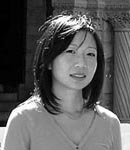Event

Film Songs, Female Voices, and the Beginnings of Chinese Sound Cinema
From the earliest years of sound filmmaking in Shanghai, singing actresses captivated the attention of filmgoers and demonstrated the symbiotic potency of synchronized sound technology. As in other parts of the world, Chinese cinema’s transition to sound transpired in fits and starts across a prolonged period of technical experimentation. But even amidst the fractured landscape of filmmaking before the standardized sound picture, a strand of consistency can be discerned in the tendency to acoustically spotlight the female singing voice. This talk takes the figure of the songstress as a starting point from which to map the crossings of sound and image throughout the transitional period. If the term “talkie” in Western film critical parlance suggests a sonic hierarchy that privileges dialogue above other kinds of sounds, the partial-sound productions that were made throughout the 1930s – like Two Stars in the Milky Way (1931) – suggest the workings of a different audio-visual logic. In these productions, musical performance emerges as a powerful rival to the predominance of storytelling. The songstress anchors a narrative system in which speech must periodically give way to song, allowing the female voice to come to the fore as a locus of dramatic and affective intensity. Even after the standardization of full-sound pictures closes the audible gap between speech and song, the singing voice retains a distinctive presence and emphasis, which would be preserved in the evolution of gechang pian (singing pictures) in ensuing decades.
Jean Ma is an Associate Professor in the Department of Art and Art History at Stanford University, where she teaches in the Film and Media Studies Program. She is the author of Melancholy Drift: Marking Time in Chinese Cinema (Hong Kong University Press, 2010), and coeditor of Still Moving: Between Cinema and Photography (Duke University Press, 2008) and “Sound and Music,” a special issue of the Journal of Chinese Cinemas. Her work has appeared in Grey Room, Post Script, Journal of Chinese Cinemas, A Companion to Michael Haneke (Blackwell, 2010), and Global Art Cinemas: New Histories and Theories (Oxford University Press, 2010). Her current book on singing women in Chinese cinema is forthcoming from Duke University Press.
